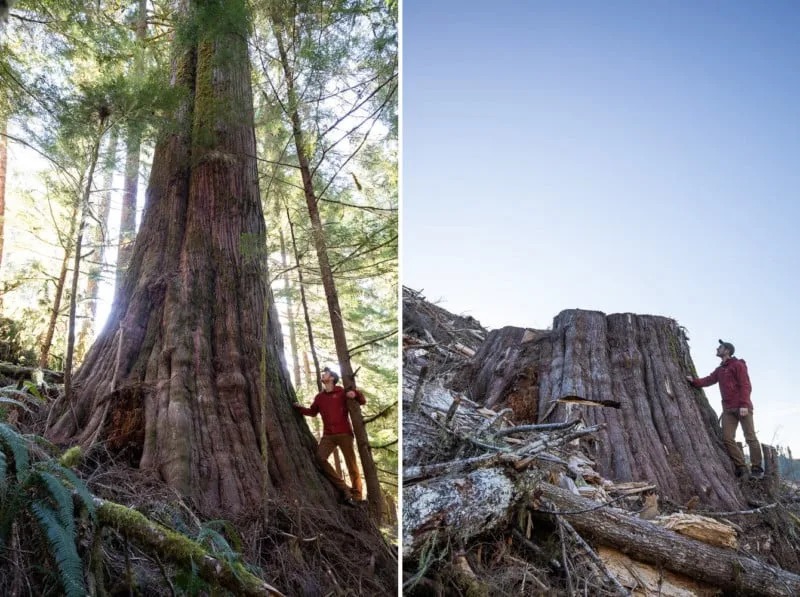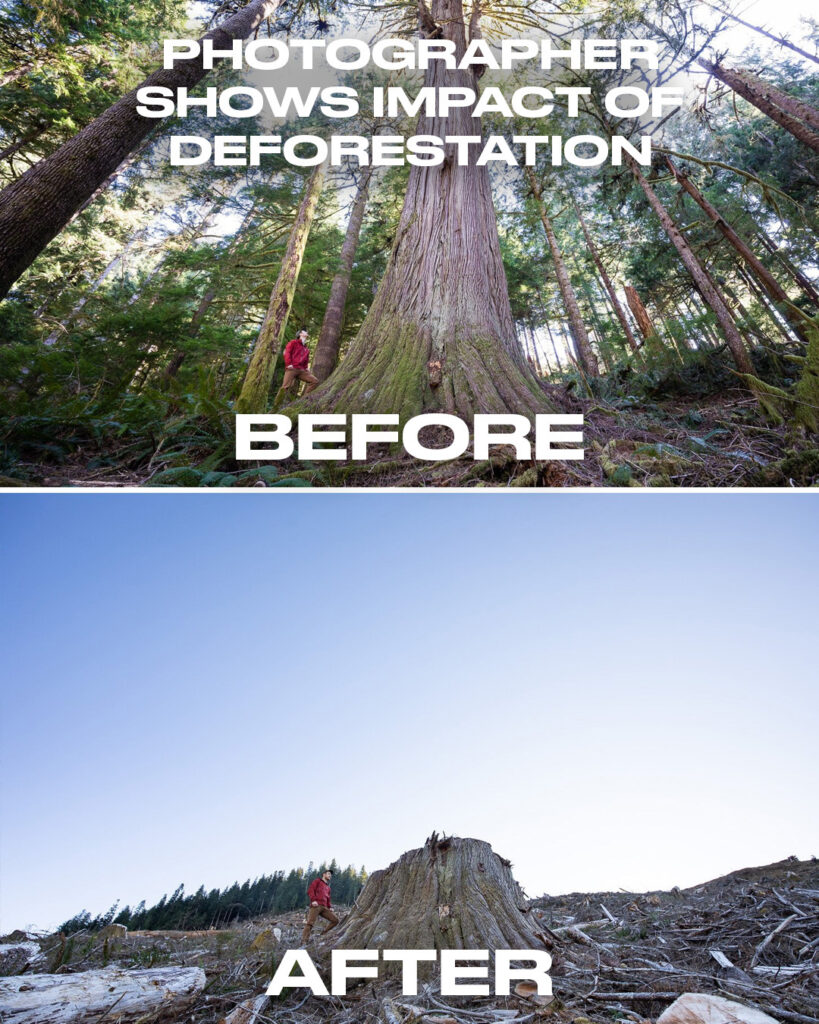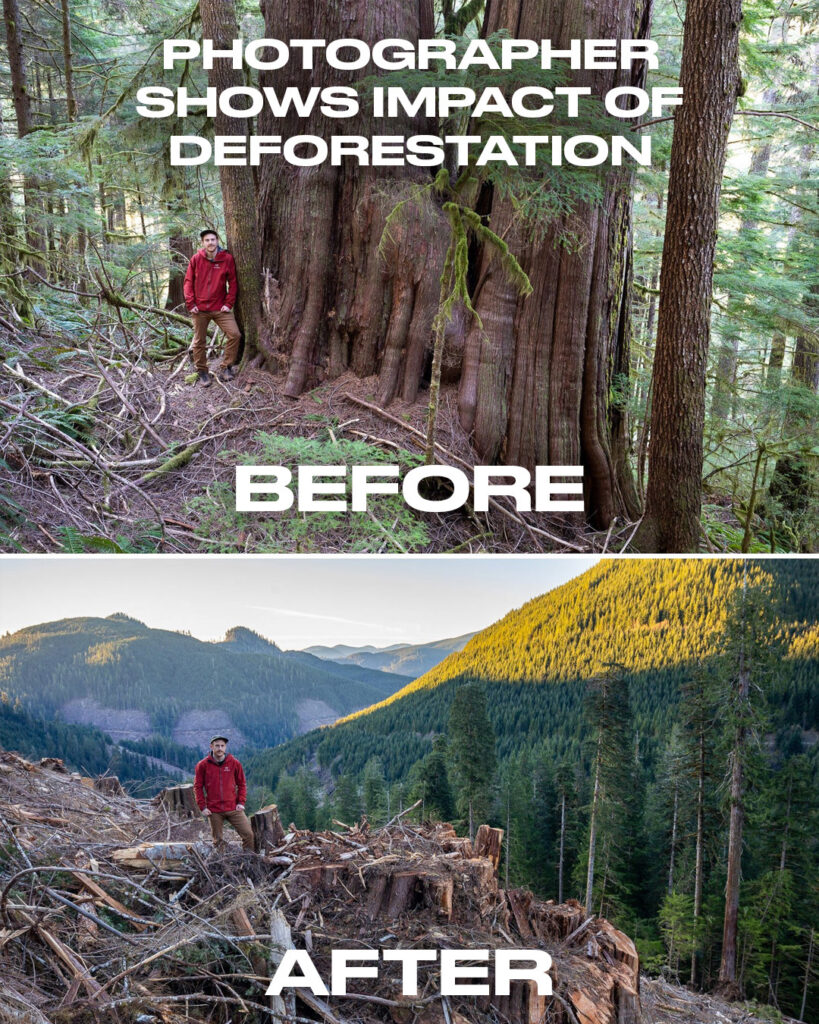
Renowned Canadian photographer TJ Watt has dedicated years of his life to using the power of his lens to shed light on the dire consequences of deforestation, particularly the impact on old-growth forests. His haunting before-and-after photos serve as a visual testament to the staggering loss incurred through logging, revealing the brutal truth behind the destruction of these natural wonders.
Watt’s mission began when he ventured into the Caycuse Valley on Vancouver Island, a forest he knew well. To his dismay, upon arrival, he discovered that logging operations were already in progress. The pivotal moment that sparked his project occurred when he stood at the edge of a cutblock, gazing at a majestic cedar destined to fall the next morning. Determined to capture the essence of what was about to be lost, Watt took the first photograph in a series that would soon become a poignant memorial.

His collection of photos, available on his website, serves as a tribute to the awe-inspiring trees mercilessly sacrificed in the name of progress in Canada’s old-growth forests. Each pair of images depicts a stark contrast – the first, a “before” shot, showcases a vibrant, towering tree, often wider than a person is tall, with Watt posing alongside in a distinctive red jacket. The subsequent “after” photos capture the same location, with Watt replicating the pose and attire, but the once-majestic trees reduced to lifeless stumps.
Watt, reflecting on his experiences over the past decade, lamented the irreversible loss of ancient ecosystems that rival the beauty and grandeur of any on Earth. He conveyed the difficulty of articulating the profound impact of clearcut logging in words, describing it as “total annihilation.”

Clearcut logging, a profit-driven practice involving the indiscriminate felling of most or all trees in a forested area, is not only economically lucrative but also ecologically devastating. Watt’s documentation of the aftermath aims to expose the severe environmental and wildlife repercussions of this destructive method. Merely replanting trees, he emphasizes, cannot rectify the extensive damage wrought.

According to the Global Environmental Governance Project, the consequences of clearcutting are far-reaching, leading to habitat destruction, loss of biodiversity, species extinction, soil erosion, flooding, nutrient loss, displacement of indigenous tribes, disruption of weather patterns, and exacerbated climate change.

Watt’s powerful images have attracted widespread attention, both in traditional media and online platforms, contributing to increased awareness of the urgent need to address clearcut logging. The striking contrast between the thriving forests and their barren aftermath has prompted discussions and reactions from audiences globally.

Commenting on one of Watt’s Instagram posts, a user expressed the sentiment shared by many: “The forest and trees are so magnificent. It’s heartbreaking to hear about and see all that happens there!” These poignant words capture the emotional response to Watt’s visual chronicle of a natural heritage under siege, urging viewers to confront the harsh reality of deforestation and advocate for sustainable practices to safeguard our planet’s vital ecosystems.

Leave a Reply